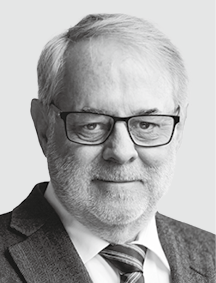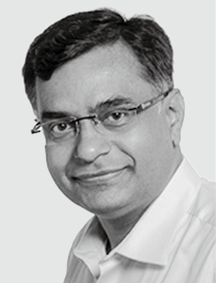Control and Protection for HVDCAn introduction to MACH
Highlight
Recent years have seen an unpreceded growth in utility investments globally in HVDC transmission links, due to the superiority of HVDC technology in transmitting power over long distances with extremely high efficiency, controllability, and the unparalleled ability of HVDC technology to solve many of the challenges in today’s complex power grids and to support the journey towards a carbon-neutral energy system. A crucial element of HVDC technology is its control and protection system—often called the brain of HVDC transmission systems. Hitachi Energy’s state-of-the-art MACH control system provides unequalled calculation capacity and enables a high degree of integration and handling of all HVDC control and protection functions. MACH is a dedicated, highly performance-optimized control system key to the superior performance and reliability of HVDC and power quality solutions supplied by Hitachi Energy. This article introduces the HVDC MACH control system, its main capabilities, advantages, system architecture, and future outlook.

Introduction
High-voltage direct current (HVDC) is a key enabler for a carbon-neutral energy system. It is highly efficient for transmitting large amounts of electricity over long distances, integration of renewables, and interconnecting grids, which creates opportunities for new sustainable transmission solutions.
HVDC systems can transmit more electrical power over longer distances than similar alternating current (AC) transmission systems, which means that fewer transmission lines are needed, saving both investment and land usage. In addition to significantly lowering electrical losses, HVDC technology is easily controlled, and can stabilize and interconnect AC power networks that are otherwise incompatible (see Figure 1).
Today, there are two main technologies. HVDC line commutated converter (LCC), also called HVDC Classic, was the first developed technology. LCC is used primarily for connecting remote generation over long distances, grid interconnection, and direct current (DC) links in AC grids, overland or subsea, where conventional AC methods cannot be used. The second technology is the HVDC voltage source converter (VSC), developed by Hitachi Energy and launched in 1997 as HVDC Light. It is an adaptation of HVDC Classic used to transmit electricity in using environmentally friendly cables, overhead lines, or a mix of cables and overhead lines. It can be used for connecting remote generation, grid interconnections, offshore wind connections, DC links in AC grids, power from shore, city center infeed, and connecting remote loads. With Hitachi Energy HVDC Classic and HVDC Light, it is possible to transmit power in both directions and support existing AC grids in order to increase robustness, stability, and controllability.
Figure 1 — Illustration of HVDC Transmission System An HVDC transmission system interconnects two customer grids, which can be asynchronous or even have different frequencies.
An HVDC transmission system interconnects two customer grids, which can be asynchronous or even have different frequencies.
Introduction to HVDC Control and Protection
Figure 2 — Illustration of a Typical HVDC Bi-pole Installation The HVDC AC converter station in bi-pole configuration has two parallel HVDC converters consisting of transformers, cooling system, reactors, HVDC valve halls and other AC transmission equipment. Each electrode can be operated individually, allowing power transmission to continue even during maintenance.
The HVDC AC converter station in bi-pole configuration has two parallel HVDC converters consisting of transformers, cooling system, reactors, HVDC valve halls and other AC transmission equipment. Each electrode can be operated individually, allowing power transmission to continue even during maintenance.
An HVDC station is a complex installation containing many parts that need to be carefully controlled to guarantee the best performance of the complete system. An often-used configuration is called a bipole, which consists of two poles, one with positive and one with negative polarity. One pole consists of converter valves and phase reactors located indoors and power transformers located outside (see Figure 2). There are also many other high-voltage electrical power devices such as breakers, disconnectors, current transformers, capacitive voltage dividers as well as very specialized measurement devices like optically powered direct current measurement units and compensated resistive voltage dividers. The converter valves need a cooling system using deionized water to cool the power electronic switching components and an extensive auxiliary power system to keep the station running.
HVDC converters are controlled by providing signals to operate the converter valve semiconductors. These components react in just a few micro-seconds, meaning that an HVDC converter represents a uniquely controllable device in a power system. With a meticulously designed control system, such fast power changes can be used to stabilize connected AC power systems in many different ways, for example, by damping power oscillations, providing support for sudden loss of power generation, and balancing voltage-changes using reactive power control.
As an HVDC converter cannot operate without a working control, that system must also be very reliable. To achieve such high degrees of reliability, a 100 percent digitalized control system, with extremely fast switchover to a hot standby system with no interruptions in power transfer, was introduced by Hitachi Energy in 1982. This configuration has since then been used for all Hitachi Energy HVDC installations.
With such fast-reacting converters and control systems, it follows that the protections must also be much faster than traditional AC protections and must have reaction times well below 1 millisecond to avoid damage to the converter valves. The building blocks of the modular advanced control for the HVDC (MACH) system are equally well suited to building a fully duplicated centralized protection system, connected to measurement devices using very fast optical process buses.
The high performance of the MACH system has also allowed for high integration of other important functions such as fully duplicated and integrated transient fault recorders that generate easily readable records in standard IEEE common format for transient data exchange (COMTRADE) format. As a fully integrated application it can record any signal available in the computers or digital signal processors (DSPs), and the number of recordable signals is only limited by available memory.
Additional high-speed global positioning system (GPS) clock-synchronized analog inputs (50 MHz) have been added to allow integration of line and cable fault locators that use travelling waves technology and accurately determine the fault locations in case of DC line or cable fault.
MACH Control Platform
The MACH control and protection system can be divided into several different building blocks (see Figure 3), that together create a modular system that can control all types and generations of HVDC systems that have been delivered by Hitachi Energy or even other HVDC vendors. With this backward compatibility, Hitachi Energy is able to support its customers with at least one control and protection upgrade during the expected 40-to-50-year lifetime of an HVDC installation benefitting from the latest advances in control and protection technology.
The main closed loop control consists of four different parts that all are redundant, the main computer system consisting of three different products: the PS700, a high-performance server type computer with 8–12 cores, the PS935, an 8-core DSP platform, and the PS775 redundancy changeover unit (see Figure 4). The main controller receives its input from the input/output (I/O) system through different process buses. Depending on the system need, either dedicated I/O systems are used (for example, low-latency I/O at 500 k samples per second or unconventional measuring units, such as, digital optical instrument transformers) or standard conventional I/O systems over IEC61850 (used for control of larger substations connected to the HVDC system). A core part of the system is the converter valve electronics that connects directly to the semiconductors that are in each position of the converter valve. The valve control unit acts as an interface between the hundreds or thousands of positions in the converter valves and main control system. Together, the four different building blocks form control and protection loops ranging from tens of microseconds to milliseconds.
All application codes are programmed by a common graphical programming language, developed and owned by Hitachi Energy, called HiDraw, which allows for design, real-time debugging, and simulations of complete converter systems before they are built, connected to power systems models. HiDraw has been the programming language for MACH for the past 30 years and allows for exceptionally fast upgrades of older installed systems since, for example, control loops and protection schemes can be directly re-used and integrated with the latest base designs.
Connected to the station level bus there are several different systems, including operator workstations, servers, and gateways interacting with third party systems. Additionally, the Hitachi Energy energy connect (EC) edge gateway enables MACH to interact with a Hitachi Energy Lumada/IdentiQ system.
Other applications
The superior performance and converter control capability of MACH makes it suitable for other applications within Hitachi Energy that need similar performance. These include power quality systems such as static var compensators (SVCs), static synchronous compensators (SVC Light STATCOMs) and series compensators, used to provide more power and control in existing or new AC networks. The MACH system is also being extended to energy storage solutions like the E-STATCOM (SVC Light Enhanced) as well as low- and medium-voltage converter applications such as EV chargers and static frequency converters.
Hitachi Energy’s MACH digital control platform is a core technology piece in the energy transition, transmitting large amounts of power over long distances with extremely high efficiency and integrating renewable generation at scale into the grid. It is what supports the reliable, resilient, and flexible power grid that is needed to meet the world’s growing electricity demands and maintain the momentum toward net zero emissions.
Conclusions
The MACH system architecture plus hardware and software interfaces have been carefully chosen so that MACH can continue to evolve and remain the base control and protection system for Hitachi Energy’s future HVDC and power quality solutions, thereby enabling the energy transition.
The company expects to introduce even higher performance, more integrated solutions, and new innovations, without changing the basic structure of MACH. Interoperability will be an increasingly important part of future systems, enabling, for example, DC-grids where interaction between several HVDC stations from different manufacturers will be required, in addition to new system technologies such as hybrid HVDC breakers.









